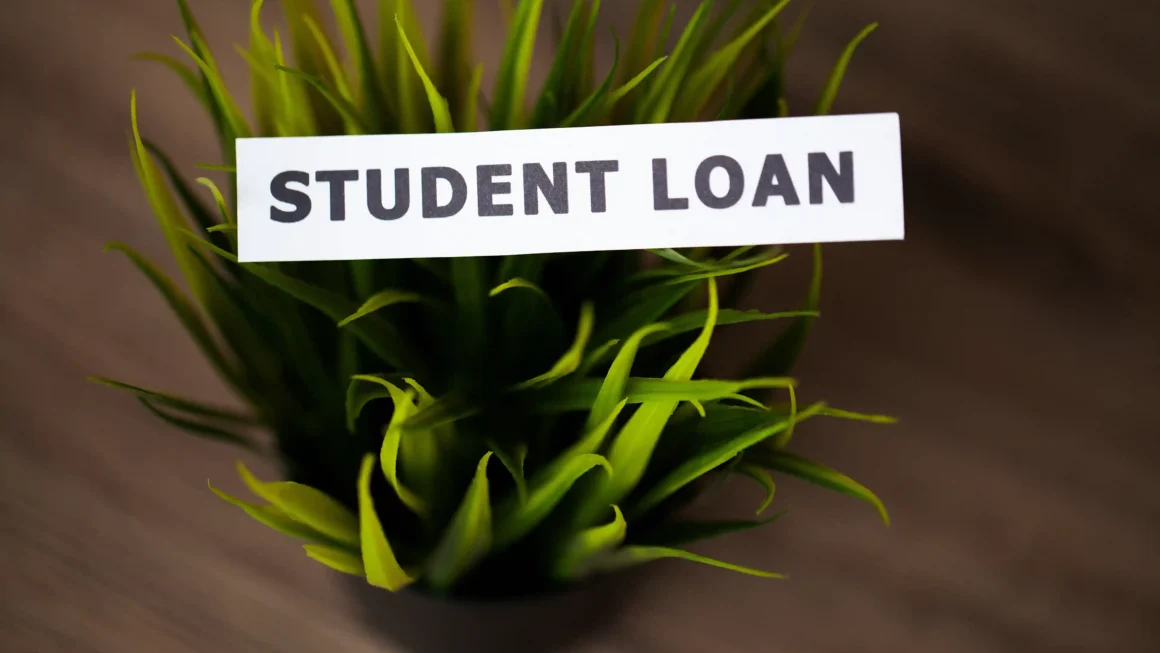Taking out a study loan is a big step—especially when you’re chasing academic or career dreams. But the interest rate on that loan can either propel you forward or weigh you down for years. Getting a study loan with low interest isn’t just luck—it’s a result of smart research, preparation, and strategic choices. Here’s a detailed guide partitioned into clear sections, giving you everything you need to know to score that favorable rate.
Key Takeaway
Getting a study loan with low interest isn’t just about finding the cheapest option—it’s about making smart, informed decisions at every stage of the borrowing process. By comparing lenders, leveraging government subsidy schemes, maintaining a strong credit profile (or that of your co-applicant), and offering collateral where possible, you can significantly lower your loan’s interest burden. Choosing between fixed and floating rates wisely, applying early, and preparing for possible refinancing later can further reduce costs. Most importantly, staying honest and organized with your documentation improves your chances of approval and ensures a smoother experience. With the right strategy, your education loan can be a smart financial stepping stone—not a long-term liability.
1. Understand What Influences Study Loan Interest Rates

Before applying, it helps to understand:
- Credit score
A higher credit score shows lenders you can be trusted. Even for student loans, some banks look at your or your co-applicant’s score. - Income and employment stability (especially for co-applicants)
A steady, reliable source of income reassures banks that EMI payments will be met. - Collateral or security
Loans backed by secure assets (like fixed deposits, insurance policies, or property) generally carry lower interest. - Loan amount and tenure
Higher loan amounts or longer repayment periods may come with higher interest to compensate lenders. - Lender type
Government-sponsored and public-sector bank loans often have lower rates than private-sector or NBFC loans. - Promotional offers
Some institutions seasonally advertise special rates—especially at the start of an academic year.
Understanding these factors helps you shape a plan that puts you in the driver’s seat.
2. Choose the Right Lender
Start by investigating different lending options:
• Government‑backed and Public Sector Banks
These often offer the lowest baseline interest rates and may include subsidies or moratorium periods. Examples include:
- India: State Bank of India (SBI), Bank of Baroda (BoB), Punjab National Bank (PNB)
- USA: Federal student loans (Direct Subsidized and Unsubsidized Loans)
• Private Banks and NBFCs
These lenders provide speed and flexibility, such as online applications and higher loan caps—but often at higher rates. Interest rates vary widely based on risk assessment.
• Education Loan Marketplace Platforms
Platforms like Cred, PaisaBazaar, and Eduvanz in India let you compare multiple lenders in one go to find the best offers.
• International Student Loan Programs
If you’re studying abroad, explore lenders that cater to international students, likely with co-applicants abroad or collateral (e.g., Prodigy Finance, MPOWER Financing).
3. Leverage Government Schemes and Subsidies
One of the most effective ways to reduce your study loan interest burden is by taking full advantage of government schemes and interest subsidies. These programs are designed to make education more affordable, particularly for students from economically weaker sections, minority communities, or specific regions.
In India:
- Central Sector Interest Subsidy Scheme (CSIS):
- For students from families with annual income up to ₹4.5 lakh.
- Covers interest during the moratorium period (course duration + 1 year or 6 months after getting a job).
- Available for loans up to ₹7.5 lakh from scheduled banks under the IBA model.
- Dr. Ambedkar Central Sector Scheme for OBCs/EBCs:
- Offers full interest subsidy for students pursuing higher studies abroad.
- For students belonging to OBCs or Economically Backward Classes.
- Padho Pardesh Scheme (Discontinued from 2022, but check for similar future programs):
- Previously provided interest subsidies for minority students studying abroad.
- State-Level Education Loan Schemes:
- Many Indian states (like Tamil Nadu, Kerala, and Bihar) offer their own subsidy or guarantee programs.
- These may include full or partial interest waivers, especially for girl students or merit scholars.
In Other Countries:
- United States:
- Subsidized Federal Student Loans: Interest is paid by the government while you’re in school at least half-time.
- Public Service Loan Forgiveness (PSLF): For graduates working in public/non-profit sectors—remaining balance forgiven after 10 years.
- Income-Driven Repayment Plans (IDR): Monthly payments are capped based on income, and leftover debt may be forgiven after 20–25 years.
- United Kingdom:
- Student loans have income-based repayments and are written off after a certain period.
- Interest rates are linked to inflation (RPI), sometimes offering effective negative real interest.
- Australia:
- HECS-HELP loans come with no real interest—just inflation adjustments—and are repaid only when income exceeds a threshold.
Why It Matters
Government schemes are game-changers. They can eliminate thousands in interest, reduce repayment stress, and in some cases, even cover your full educational loan burden during your course. Make sure to check your eligibility, apply through official channels, and provide all required income and community documentation.
4. Strengthen Your Loan Application
Applying for a study loan isn’t just about filling out forms—it’s about presenting yourself as a low-risk, high-potential borrower. A well-prepared application can significantly improve your chances of approval and help you secure a lower interest rate. Here’s how to make your loan application stand out:
1. Build or Leverage a Strong Credit Profile
Even though most students may not have a credit history, your co-applicant’s (usually a parent or guardian) credit score plays a critical role. Lenders assess:
- Credit score (CIBIL, Experian, etc.) – A score above 700 is considered good.
- Repayment behavior – Previous loans or credit cards should have a clean repayment history.
- Credit utilization ratio – Low credit usage indicates financial discipline.
Tip: If the co-applicant’s credit score is low, work on improving it before applying. Paying off existing debts, avoiding missed payments, and reducing credit card usage can help.
2. Choose a Reliable Co-Applicant or Guarantor
A co-applicant with a stable income, permanent job, and low existing liabilities strengthens your profile. Their ability to repay is as important as yours in the eyes of the lender.
Ideal co-applicants include:
- Salaried individuals (preferably government or PSU employees)
- Self-employed professionals with regular income
- Senior citizens with pension income (though less preferred)
Tip: Always provide the latest income tax returns (ITR), salary slips, and employment proof of the co-applicant.
3. Offer Collateral for Lower Risk (If Required)
If you’re applying for a loan above ₹7.5 lakh (in India), most lenders will require collateral, especially for international studies.
Common types of acceptable collateral include:
- Residential property (owned by borrower or co-applicant)
- Fixed deposits (FDs)
- Life insurance policies
- Non-agricultural land
Collateral-backed (secured) loans not only increase approval chances but also reduce interest rates by 1–2% compared to unsecured loans.
4. Showcase a Strong Academic Record
Your academic history helps establish credibility and potential for future earnings. This includes:
- Consistently high grades
- Standardized test scores (like GRE, GMAT, IELTS, TOEFL)
- Admission to top-ranked or government-recognized institutions
Tip: Lenders are more flexible with students accepted into reputed institutions (like IITs, IIMs, or top international universities), sometimes offering faster approvals and lower interest.
5. Present a Realistic and Structured Cost Estimate
Banks prefer applicants who understand their finances. Prepare a clear, itemized estimate of:
- Tuition fees
- Living expenses
- Travel and visa costs (for overseas studies)
- Exam fees
- Books, laptop, etc.
Having this breakdown shows you’ve done your homework and can help the lender disburse funds faster and in appropriate tranches.
6. Attach All Required Documents in Advance
Delays often happen due to incomplete paperwork. Ensure you submit:
- Admission letter or offer from the university
- Fee structure from the institution
- Academic transcripts
- Valid ID and address proofs
- Income and asset proofs of co-applicant
- Collateral documents (if applicable)
Tip: Make scanned copies and keep multiple backups. Digital submission often speeds up processing time.
7. Write a Brief Statement of Purpose (SOP) (Optional but powerful)
Some lenders—especially private ones—appreciate a personalized SOP. It helps them understand:
- Why you chose the course/university
- Your career goals
- How you plan to repay the loan
This humanizes your application and builds lender confidence.
8. Use a Loan Counselor or Aggregator
If the process seems overwhelming, consider consulting a trusted education loan advisor or platform (like Vidya Lakshmi, Leap Finance, or Yocket in India). They:
- Match you with lenders based on your profile
- Help with documentation
- Negotiate better rates
While some charge a fee, many are free or compensated by partner banks.
9. Maintain Transparency and Honesty
Do not hide debts, falsify income details, or exaggerate admission claims. Lenders conduct due diligence, and any misinformation can lead to rejection—or worse, blacklisting for future loans.
5. Compare Offers and Negotiate
Don’t finalize the first offer you receive. Always:
- Ask for detailed interest breakdowns: fixed rate, floating rate, processing fee, hidden charges.
- Request waivers or discounts: some banks may drop the processing fee or offer a small rate concession in special cases.
- Consider a composite loan: use both collateral-based and unsecured loan components as needed.
6. Choose Between Fixed vs Floating Rate
Fixed interest rate
- Stable throughout the tenure
- Typically ~0.5–1% higher than floating
- Ideal if you expect rising interest rates globally
Floating interest rate
- Varies with benchmark rate changes
- Lower rate at the start, but subject to market fluctuations
- Good if you’re banking on future rate stability or reduction
7. Check for Fee Flexibility and Moratorium Benefits
Evaluate available features:
- No prepayment penalty: saves interest if you clear the loan early.
- Flexible moratorium: defers payments during the study period, though interest may still accrue.
- EMI holiday or partial payment option: helpful in case of temporary financial choke points.
8. Apply at the Right Time
- Apply 1–2 months before the academic year starts. Institutions often process loans quicker and with promotional offers.
- For abroad studies: apply as early as 4–5 months before the course begins, to accommodate visa requirements.
9. Maintain Transparency and Honesty
- Always present true data about income, assets, and academic plans.
- Clear, accurate documentation ensures smoother processing and may help secure better offers.
10. After You Borrow: Refinance If Better Deals Arise

Once studies begin—or within a year of graduation—you might find:
- Lower interest rates or better repayment structures from other lenders.
- Existing loans can sometimes be refinanced.
Be sure to watch prepayment penalties before making a switch.
Also Read :-Can Student Loans Open Doors or Create Debt Traps?
Conclusion
Securing a low-interest study loan is more than luck—it’s about optimizing every stage:
- Research government schemes and bank options
- Build a strong credit profile (for self and co-applicant)
- Offer collateral if necessary, or apply unsecured within subsidy limits
- Compare offers, understand full costs, and negotiate terms
- Decide between fixed and floating based on your long-term outlook
- Apply early, use moratorium wisely, and keep documentation and honesty a priority
- Plan for future refinance once your financial situation improves
By doing your homework, staying proactive, and maintaining transparency, you can effectively turn borrowing into an investment—and ensure your loan supports your educational goals rather than holding you back.
FAQs
1. What credit score is considered ‘good’ for getting low-interest education loans?
A credit score of 700+ is typically classified as “good” in many countries. Anything below that might result in a higher rate or even rejection. Co‑applicant scores also matter—so consider building their credit too.
2. Can I get a low-rate loan without collateral?
Yes—but it depends on your or your co-applicant’s creditworthiness. Public sector banks often offer unsecured loans up to ₹7.5 lakh at competitive rates. However, for larger amounts or private lenders, collateral is often mandatory.
3. Are there interest subsidies available for undergraduate students?
Yes. For example, in India under PSMISHE, interest subsidies apply for loans up to ₹7.5 lakh—but only for those from families earning below ₹4.5 lakh annually.
4. Should I choose a fixed or floating interest rate?
Choose based on your risk tolerance:
- Fixed: stable EMI, easier budgeting.
- Floating: lower initial rate, but subject to market changes.
5. Can I refinance my study loan later?
Absolutely. After you graduate and begin earning, refinance or switch lenders to grab better interest rates or payment terms. Just check for any prepayment fines.
6. Do international students get loans with low interest?
Yes—if they have a strong co-applicant or collateral. Alternative lenders like Prodigy Finance, Mpower, or your home country’s international student schemes can offer competitive rates.
7. How does the moratorium period affect interest rates?
During moratorium, you don’t have to pay EMI—but interest typically accrues. Subsidy-eligible loans may get partial or full subsidy on this accrued interest during the study period (under specific government schemes).



